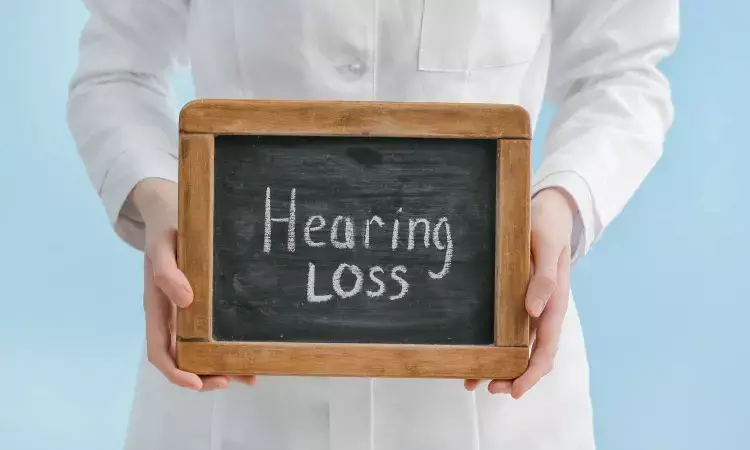- Home
- Medical news & Guidelines
- Anesthesiology
- Cardiology and CTVS
- Critical Care
- Dentistry
- Dermatology
- Diabetes and Endocrinology
- ENT
- Gastroenterology
- Medicine
- Nephrology
- Neurology
- Obstretics-Gynaecology
- Oncology
- Ophthalmology
- Orthopaedics
- Pediatrics-Neonatology
- Psychiatry
- Pulmonology
- Radiology
- Surgery
- Urology
- Laboratory Medicine
- Diet
- Nursing
- Paramedical
- Physiotherapy
- Health news
- Fact Check
- Bone Health Fact Check
- Brain Health Fact Check
- Cancer Related Fact Check
- Child Care Fact Check
- Dental and oral health fact check
- Diabetes and metabolic health fact check
- Diet and Nutrition Fact Check
- Eye and ENT Care Fact Check
- Fitness fact check
- Gut health fact check
- Heart health fact check
- Kidney health fact check
- Medical education fact check
- Men's health fact check
- Respiratory fact check
- Skin and hair care fact check
- Vaccine and Immunization fact check
- Women's health fact check
- AYUSH
- State News
- Andaman and Nicobar Islands
- Andhra Pradesh
- Arunachal Pradesh
- Assam
- Bihar
- Chandigarh
- Chattisgarh
- Dadra and Nagar Haveli
- Daman and Diu
- Delhi
- Goa
- Gujarat
- Haryana
- Himachal Pradesh
- Jammu & Kashmir
- Jharkhand
- Karnataka
- Kerala
- Ladakh
- Lakshadweep
- Madhya Pradesh
- Maharashtra
- Manipur
- Meghalaya
- Mizoram
- Nagaland
- Odisha
- Puducherry
- Punjab
- Rajasthan
- Sikkim
- Tamil Nadu
- Telangana
- Tripura
- Uttar Pradesh
- Uttrakhand
- West Bengal
- Medical Education
- Industry
Lead-Exposed Children More Likely to Have Hearing Loss, study finds

Researchers have discovered that children with high blood lead levels are much more likely to be diagnosed with sensorineural hearing loss (SNHL) even when the lead levels are only slightly increased. This correlation was found in a large American study which found that children who had blood lead levels of 3.5 µg/dL or greater had a 22% higher risk of developing hearing impairment compared to children with lower blood lead levels. The study was published in the International Journal of Pediatric Otorhinolaryngology by Neil R. and colleagues.
Even though lead-based paint was prohibited in the United States in 1978, lead exposure during childhood continues through environmental and in-home sources like older housing, soil, and pipes. Acknowledging that there is no safe level of lead, the Centers for Disease Control and Prevention (CDC) reduced the blood lead reference level to 3.5 µg/dL in 2021, which represents a change in the evaluation of pediatric lead exposure. Although lead's harmful impact on the nascent nervous system is well understood, relatively few large-scale studies have looked at its particular association with hearing impairment. This new research provides compelling evidence that even quite low doses of lead can negatively affect a child's hearing.
To assess the association between lead exposure and hearing loss, scientists employed data from the TriNetX Analytics Network, a federated research platform with more than 78 million electronic health records from all over the United States. The study involved children 18 years and below, grouping them into two categories according to their blood lead level:
• Lead-exposed group: Children with blood lead levels ≥ 3.5 µg/dL
• Control group: Young children with blood lead < 3.5 µg/dL
Young children with other causes of established hearing loss—such as congenital cytomegalovirus, inner ear malformations, congenital hearing loss, or noise-induced hearing loss-were eliminated from the analysis to provide reliable results.
Results
• Total children examined: 136,280
• 15,820 with blood lead level ≥ 3.5 µg/dL
• 120,460 with blood lead level < 3.5 µg/dL
Prevalence of SNHL:
• 2.83% in lead-exposed group (~448 cases)
• 2.32% in control group (~2,796 cases)
Relative risk (RR): 1.22
• Confidence interval (CI): 1.21–1.23
• Statistical significance: p = 0.005
This population-based analysis confirms that children with a high level of blood lead (≥ 3.5 µg/dL) are significantly at increased risk for sensorineural hearing loss relative to their peers with low levels. As the largest study to date evaluating this association under the CDC's new reference value, it presents strong evidence for improved screening and early audiologic treatment for lead-exposed children.
References
Dr Riya Dave has completed dentistry from Gujarat University in 2022. She is a dentist and accomplished medical and scientific writer known for her commitment to bridging the gap between clinical expertise and accessible healthcare information. She has been actively involved in writing blogs related to health and wellness.
Dr Kamal Kant Kohli-MBBS, DTCD- a chest specialist with more than 30 years of practice and a flair for writing clinical articles, Dr Kamal Kant Kohli joined Medical Dialogues as a Chief Editor of Medical News. Besides writing articles, as an editor, he proofreads and verifies all the medical content published on Medical Dialogues including those coming from journals, studies,medical conferences,guidelines etc. Email: drkohli@medicaldialogues.in. Contact no. 011-43720751


